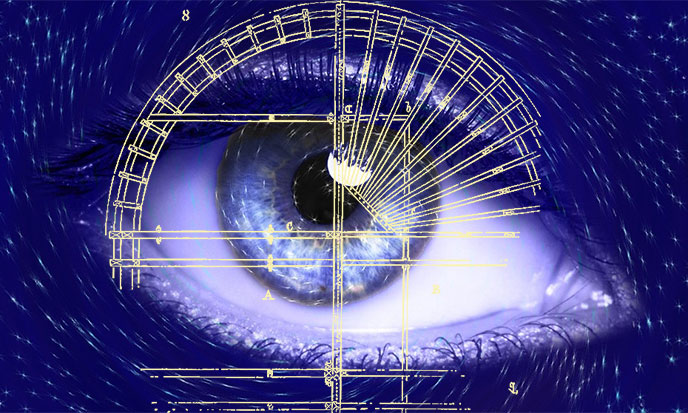
The sacred construction of the Middle Ages flourished in Europe with churches, chapels and cathedrals that follow the laws of geo-energy, vril and vouivre. The pedauques and kuldées companions knew how to raise temples that raise the assembly. Thus our Gothic cathedrals and Romanesque churches still bear witness to the secret art of the Frankbuilders: building for body and spirit.
The heritage of the raised stones
The vouivre
The Wouivre, which is also written Vouivre, is the underground energy that, through the art of the sacred builders, marries with the cosmic flow. Their union links Heaven and Earth, writes Henri Vincenot.The stars of Compostela Today geobiologists speak of cosmo-telluric energy. Only words change, knowledge remains.
 The Vouivre, “is the Great Serpent, the one who has wings when he comes down from heaven and who has none when he comes out of the earth. In Breton mythology, there is a crowd of saints who walk on a leash with the serpent they have tamed: Saint Armel, Saint Derien, Saint Méen, Saint Pol, Saint Car, Saint Curvin, Saint Kerneau, Saint Mahorn and even a woman, Saint Marguerite. This serpent is the current that connects heaven and earth. It is necessary to settle properly in its passage if we want to capture it and make it available to men! This is what companions do. They do like those of large stones, they try to place themselves in the best position to lay a trap and domesticate it.” (Henri Vincenot)“The stars of Compostela”
The Vouivre, “is the Great Serpent, the one who has wings when he comes down from heaven and who has none when he comes out of the earth. In Breton mythology, there is a crowd of saints who walk on a leash with the serpent they have tamed: Saint Armel, Saint Derien, Saint Méen, Saint Pol, Saint Car, Saint Curvin, Saint Kerneau, Saint Mahorn and even a woman, Saint Marguerite. This serpent is the current that connects heaven and earth. It is necessary to settle properly in its passage if we want to capture it and make it available to men! This is what companions do. They do like those of large stones, they try to place themselves in the best position to lay a trap and domesticate it.” (Henri Vincenot)“The stars of Compostela”
The Kuldées
This sacred knowledge of which the legendary Breton has kept the memory goes back a long way, long before the period called antiquity. The saints mentioned by Vincenot are not Christians, they are pagan initiates. The sacred builders took the name of Kuldées.
It is from the term kuldée that came the term cult. Gaul is a Greco-runic phonetic. Originally, Celtic languages came from guanche, a protohistorical language that spread across all continents from the great continent that had disappeared. For the Druids, there has always been only one great spiritual tradition on Earth.
It tints with time and cultures but remains One. There are those who fight it, there are those who restore it. Christ was for the Druids a being who came to restore the tradition. Establishing a Christo-Druidism was a natural thing for the Celts.
In the same way, the Viking Christo-Odinism will make bloom all the cathedrals of Europe. However, because of the wars instigated by the opponents of the tradition, all these orders operated in absolute secrecy until today. (source)
On this same link, the Morpheus site proposes a Gallic prayer — recently written — wrapped with soft thinking and steeped in Christian sentimentality.
The Free-Masons
Heirs of Atlantis and Kuldée Celtic Christianity, the ancient Druids have embraced the new Christian religion while secretly preserving the essence of their own philosophy and spirituality linked to the splendour of the universe. Our ancestors willingly accepted Christianity but enriched it with Druidic and Gnostic science. In the year 926, we, the Kuldées builders, heirs of the Giants of the Great Stones, obtained from the princes a charter of franchise that made us the Freebuilders and Freemasons, free!” (Henri Vincenot)“The stars of Compostela”
Today’s Freemasonry has nothing to do with the Kuldées. She confesses to speculation, while that of the Kuldées was operative, oh how much! From the year 1000 to the year 1300, the Kuldées remained united in a secret society, opposed to the pope, adept of this “Christianity quickened by philosophy and druidic knowledge. The Kuldées did not build in the same way as the monastic orders submitted to Rome.” (Henri Vincenot)“The stars of Compostela”
This way of building died out with the dissolution of the Temple order. Their Christianity predated Jesus. It had its roots in the teaching of the former gods, that of Rama called Lama the Black Buddha, that of the Atlanteans.
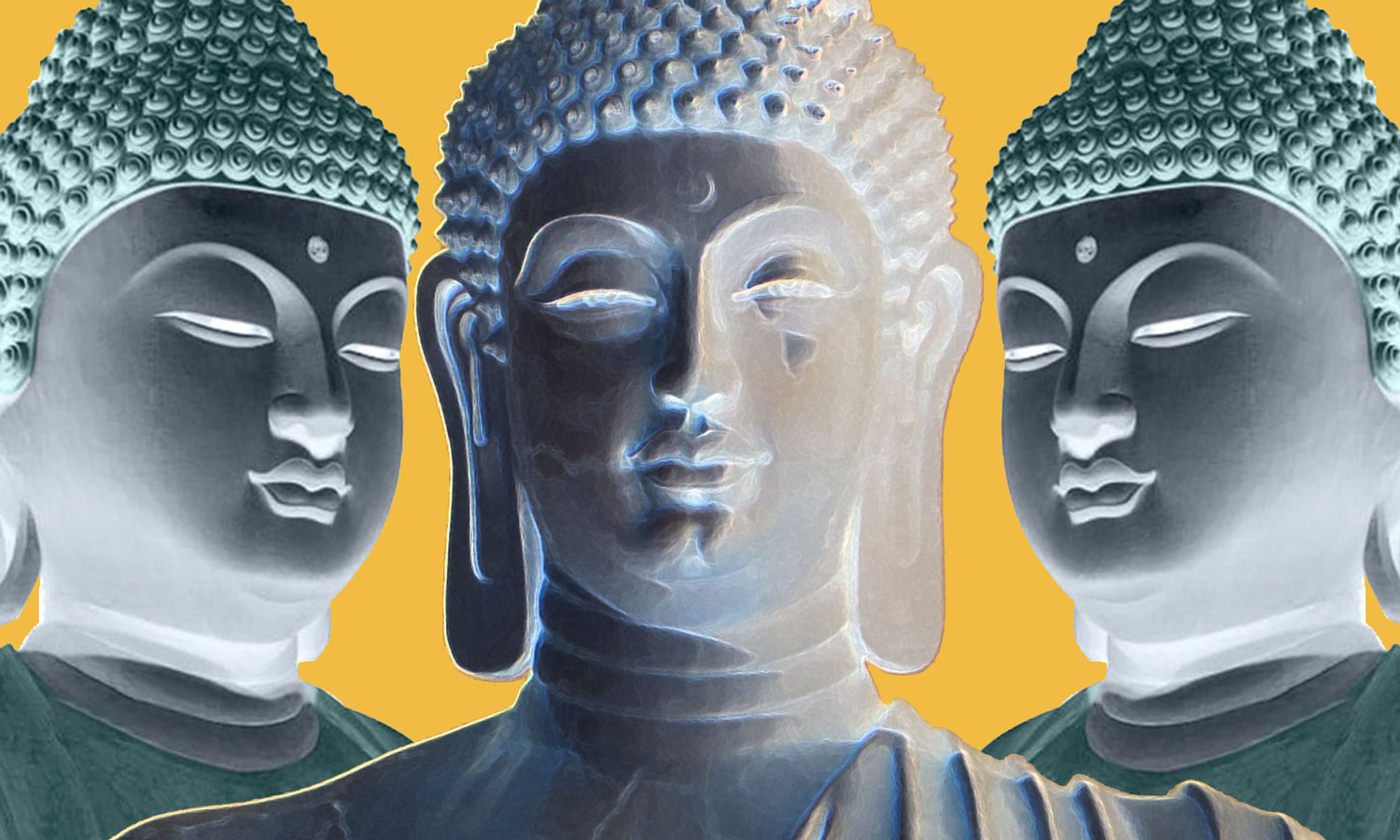
The first Buddhas are black. They have frizzy hair. Rama was like that. Giant in size and wisdom, he belonged to the previous humanity.
The prophecy of the Gauls
In the 6th century BC, a druid prophesied to Pythagoras:
The Gauls
from a culture,
of science and religion
of very high antiquity
will lose their liberties
when their forests will disappear
and that they will adopt the customs of the invaders
which will only imitate the achievements
of Hyperborean civilization
by distorting them”. (source)
“The gods came from Hyperborea,” wrote Plato, the most illustrious philosopher of ancient Greece. Before becoming the disciple of Socrates, the young Plato had studied at Saïs in Egypt and at several druidic universities in Brittany, such as that of Saint-Just near Rennes or that of Guihalon near Lamballe.

Decline and Oblivion
Naive and incredulous, our so-called civilization is that of violence, daughter of ignorance. Our civilization tells the story of a decadence. We know nothing of Druidism, the Old Religion, paganism, the gods before, our true origins. The books that deal with these issues are appalling. The more recent they are, the more distressed I am. How dare their authors claim to be specialists, they who have forgotten everything? Self-sufficient, they boast of their insufficiency. And sects, clans, parties, clubs, friendships, fraternities, religions, doctrines, encyclopedias and international institutions are no better.
But that was before. When time could count without Eden Saga. Impossible now. No one can say: “I knew nothing“. I tell you everything I know. My motto? I remember. (source)Quebec motto
The art of the line
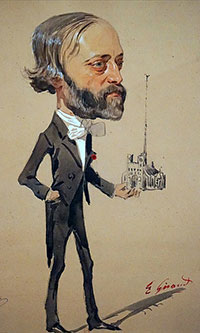 Eugene Viollet-le-Ducin the article: Trait (art du) of his Dictionnaire raisonné de l’architecture française du XIe au XVIe siècle, has nothing of a kuldée builder, and everything of a profane unbuilder. “The art of the line is a traditional way of tracing timber and its assemblies.” he writes. Agreed.
Eugene Viollet-le-Ducin the article: Trait (art du) of his Dictionnaire raisonné de l’architecture française du XIe au XVIe siècle, has nothing of a kuldée builder, and everything of a profane unbuilder. “The art of the line is a traditional way of tracing timber and its assemblies.” he writes. Agreed.
But for him, tradition is medieval. He believes that the framing line was drawn up by the masters and the companions at the end of the twelfth century, on the great yards of France, at the same time as the stereotomy, which is the art of the stone line, was invented by the fitters, master stonemasons.
In addition, in 2009 UNESCO inscribed “the tradition of the layout in the French framework” on the representative list of the intangible cultural heritage of humanity. (source)Wikipedia
Contrary to Viollet-le-Duc’s speculations, the art of the traitor stereotyped her twin sister was not invented in the Middle Ages. It shares a know-how that dates back to the ancient builders of megaliths, dolmens or menhirs, which once covered the western land.
Like Dolmens
The dolmens with rooms, like that of the Roche aux Fées en Ille and Villaine, circulate energies exactly as in the Romanesque churches: there are the narthex, the nave, and the lateral or radiant chapels, as in the Gothic churches.
The big difference is not the way to treat energy, identical in both cases, but in the way to assemble stones, the very purpose of stereotomy — or art of the line for stone
One may wonder by what mystery such know-how reappeared in the West millennia later, in the Middle Ages? Probably because he never got lost. This art was for a long time the prerogative of Jacques or cagots, to know the secret that they passed from grandfather to grandson.
The Jacques were masters of wood assembly, they knew how to make the strongest frames by choosing the best species and cutting the best beams. They also knew – and above all – how to cut the various stones, they mastered the secret magic of polarities and the subtle art of assembly.
Singing Stones
For them, masonry was not limited to stacking cinder blocks or pouring concrete, as it is today.
It was knowing how to make the stones sing, to make them conductive and docile, to know how to match the stones of love or to make the proud face each other, to draw their secret essence and to deploy their energy. The stones are poured into the hands of those who know how to adorn them. Master James’ children have carefully transmitted this knowledge through the centuries, even millennia.
If this is indeed a particular technique of drawing and assembly, it is also an even older knowledge, and which touches on the transmission of geo-energy. To hear the language of the goslings, the language of the jars, the beautiful green language of the children of Master Jacques, one must have a sensitive ear to the tales of Mother Goose. The word “trait” has many meanings in our language, and it was not chosen here by chance – especially since chance, as everyone knows, does not exist. Everything happens in purpose.
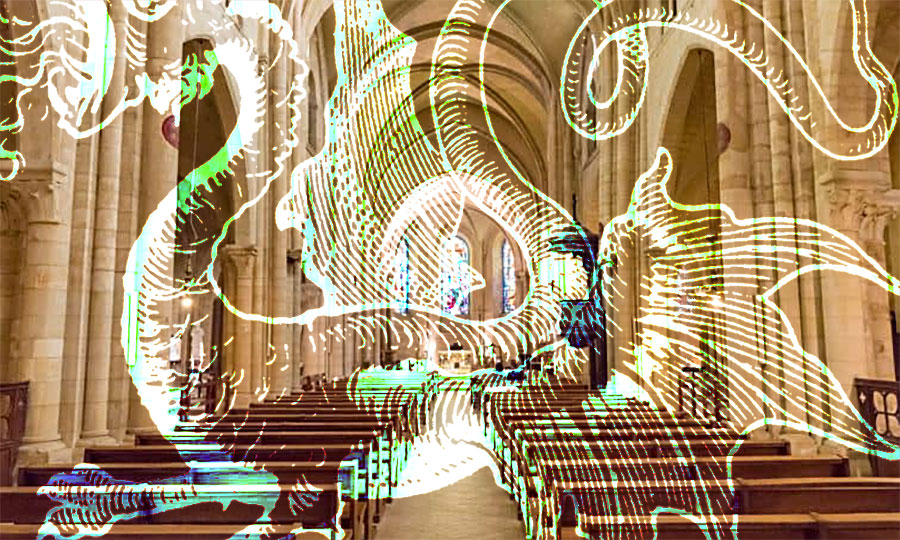
In the church of Saint-Pierre de Montmartre, in Paris, the vouivre makes feel all its power…
The trait in the Ancients is first of all the arrow pointing to a target, alive or not. It is the art of aiming and reaching its goal. In sacred architecture, the trait is the effect received by the neophyte when he comes into contact with the energies of the vaults and piles. The pile, or pillar, consists of a pile of alternating polarity stones, in order to transmit the vril energy.
Sometimes, as in the choir of the church of Saint Pierre de Montmartre in Paris,see above image there are two monolithic pillars, that is to say consisting of a single stone. Two perfect menhirs. The rules of alternating polarity, in this case, will end up with the base and the capital. This is what the Masonic temples with the two columns Jakin and Boaz try to reproduce, without succeeding. Jakin, like the Saint James of the Jacquaires, Jacques of Compostela, much more ancient than the Christianity of Jesus and the popes …
The line is also the action of dragging, of pulling at oneself. The draft animalsin French: animaux de trait are the ones who pull the wagons. The art of line of the Jacques is also the art of drawing from stone its most beautiful harmonics.
Jacques or Pedauques
It is to pull up the assembly of the faithful thanks to the effect of vault, effect induced by the shape of the stones, and by their conductivity carefully restored by the sacred builder. As the draught horse carries a carriage or an omnibus, the nave carries in the heavens the assembly delighted of the faithful. It is through this effect of the art of the line that each person, if sensitive, receives serenity and inner joy through his simple presence in the nave.
The art of milking, of milking, is still the art of milking, of sucking out the nourishing milk. The experience of the Jacques masters is a collection of thousand and one secrets that allow to milk the memory of the stones, to make them return the telluric energy of which they are custodians, in order to suck up to the last drop the light of knowledge.
These are some examples of the good use of the language of goslings, young geese and jars, and not birds as has been written too much. They are called goslings because they are the sons of Mother L’Oie, who is also written the Mother Law, or the bitter law. These little ones wear a badge, the crow’s foot. Hence their secret name, the Pedauques, which means goose’s feet in Occitan. Let us hope that they have allowed you to penetrate the arcana of the sacred construction.
Their name comes from Queen Peduque, an image of a woman with goose feet depicted on several medieval churches in France, and which is said to be that of Queen Berthe au Grand Pied, mother of Charlemagne, residing in the city of Toulouse, capital of the Visigoth kingdom from 413 to 508. It is characterized by a crow’s foot, hence its name: “pé d’auca” in Occitan means “goose’s foot”. The feet… And as once at Tholose they bore the Pedauccan Queen. (Rabelais)
If the goose foot is represented on churches, it is because these monuments are the work of the Peduccas or Kuldées, and they were built according to their secret tradition. Thus the queen Peducca, more than Berthe aux Grands Pieds,with big goose’s feet, designates the arch, the cosmo-telluric energy carefully assembled in the building marked with the goose’s foot. Kind of a Kuldean logo …
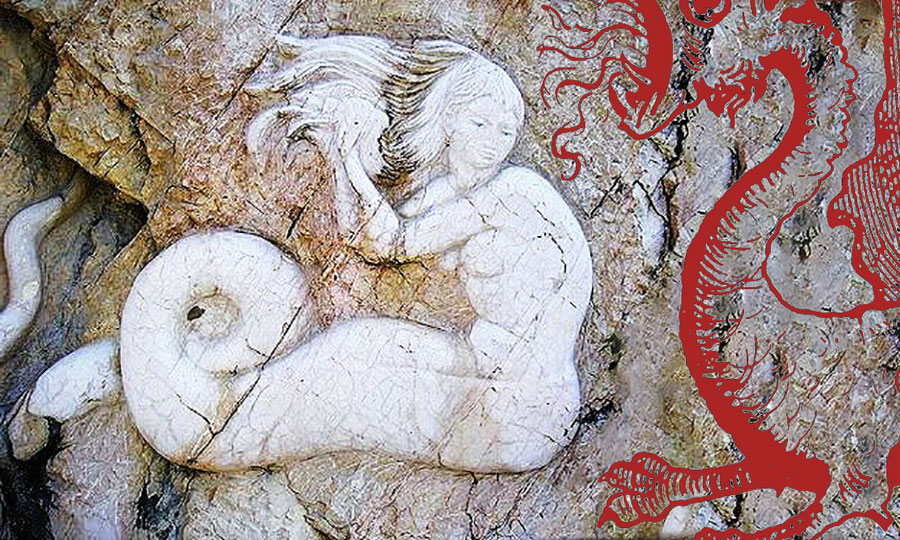
There are many methods of appropriating these ancient techniques. I know some of them. Many of you will have the opportunity to learn from it here and there. Others already possess this knowledge, deeply engrained in their unconscious and ready to serve. To those, I wish them good luck. The world that comes is in great need of their talents.
Geobiology
A new science, not recognized by dominant and yet effective thought, geobiology, studies buildings and powerful places, and seeks to correct the defects of a house in terms of cosmotelluric energy. In this regard, the work of companions passing on duty and other enlightened builders of the early Middle Ages deserves special attention.
The medieval builders knew that true spirituality comes from a carefully chosen place, from a rigorously built building and not from an indefinable faith. This one is different for everyone. While the power of a place, the geobiological perfection of a covered alley, a dolmen, a Romanesque church or a Gothic cathedral are noticeable by all. Provided you don’t feel numb. Henri Vincenot -again, he gave us a perfect description of the feeling that a sensitive person experiences when entering such a place.
On the eighth day of their stay in Fontenay, he dared to enter the church. The nave appeared. Vaulted in a cradle, naked and pure. He entered through the great door, and was so seized and transformed that he took only two steps and stopped, as if petrified. Something penetrated him through the soles of his feet and rose up along the inner side of his thighs, surrounded his sex and base, then invaded his loins and neck, and it seemed to him that a flood of warm blood was flooding his skull. (Henri Vincenot)“The stars of Compostela” p.184
It is the precise effect of a rise of kundalini that Vincenot describes as a jeweller in his simple language and of great efficiency. Test, on the occasion, whether the cathedral of Chartres does you that effect, or the crypt of Vézelay, the church of the abbey of Fontenay, the crypt of the church of Saint Benoit sur Loire, to name but a few. Any religious edifice built between 1100 and 1300 will give the same sensations, as long as the essential underground stream still animates it.
In the Middle Ages, the human race has created and thaught nothing important but written in stone.

A first version of this article was posted ten years ago, in February 2013. You can complete this reading with the article Being Sensitive
For further information
Templars and Cathedrals


